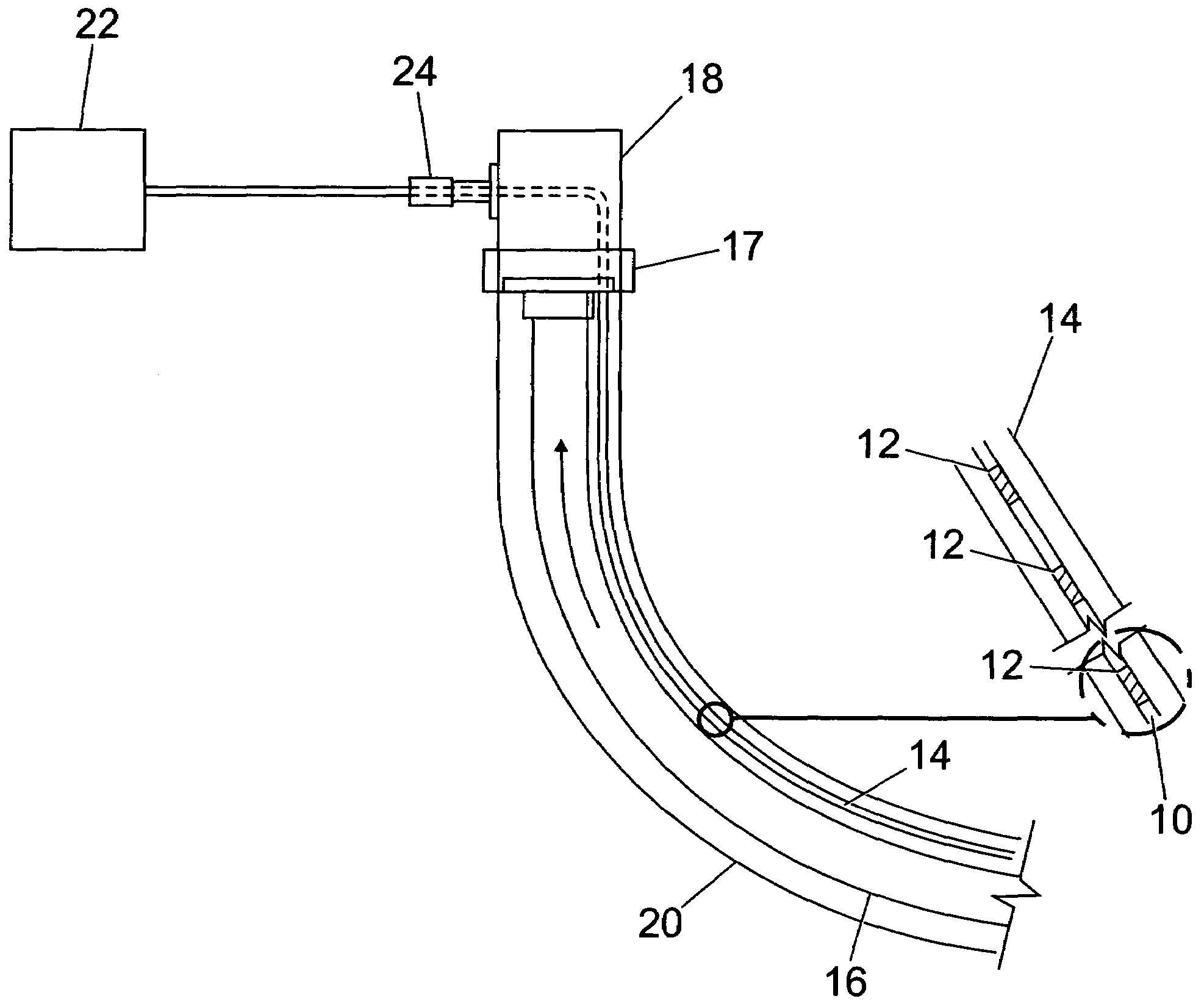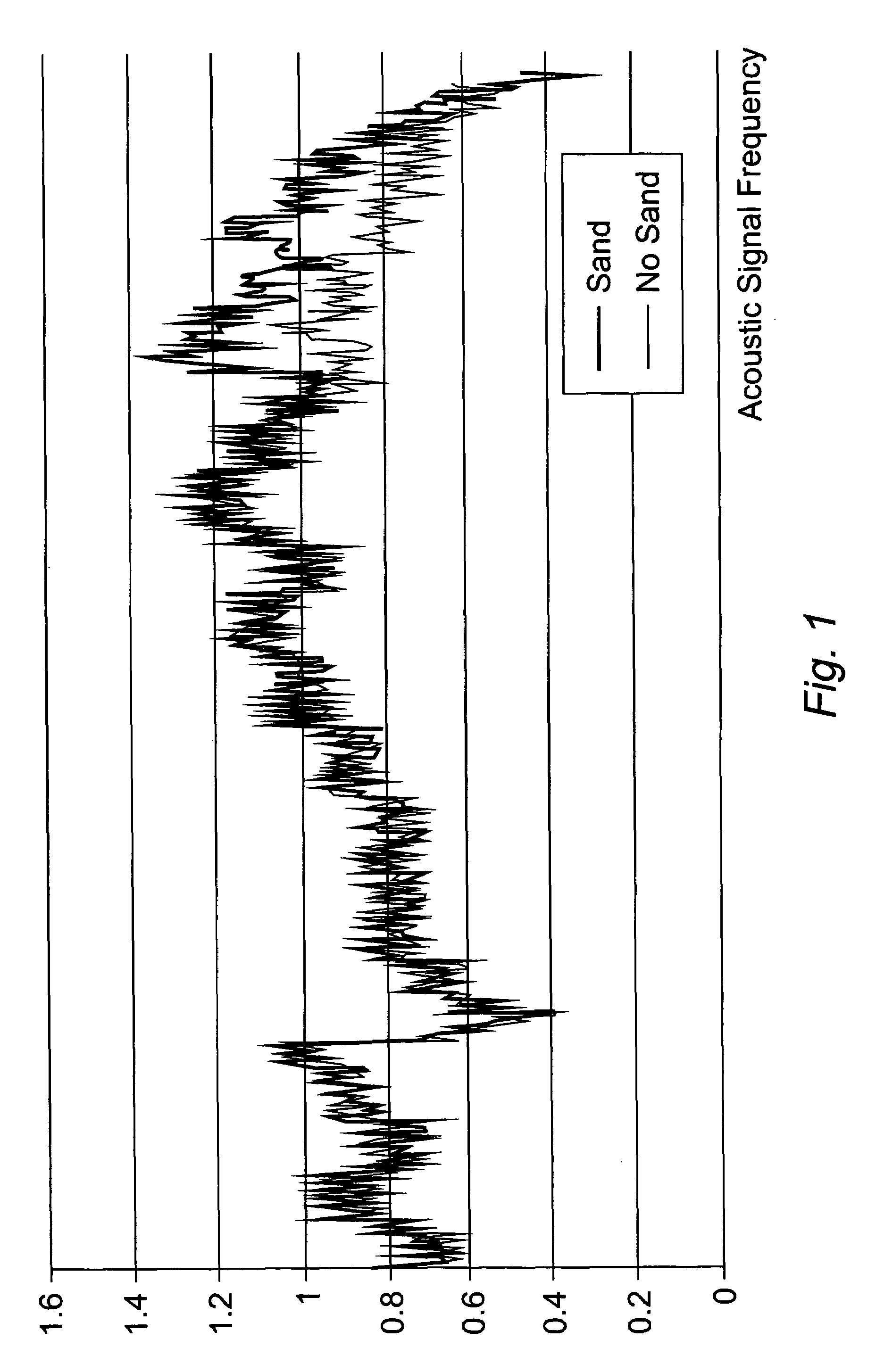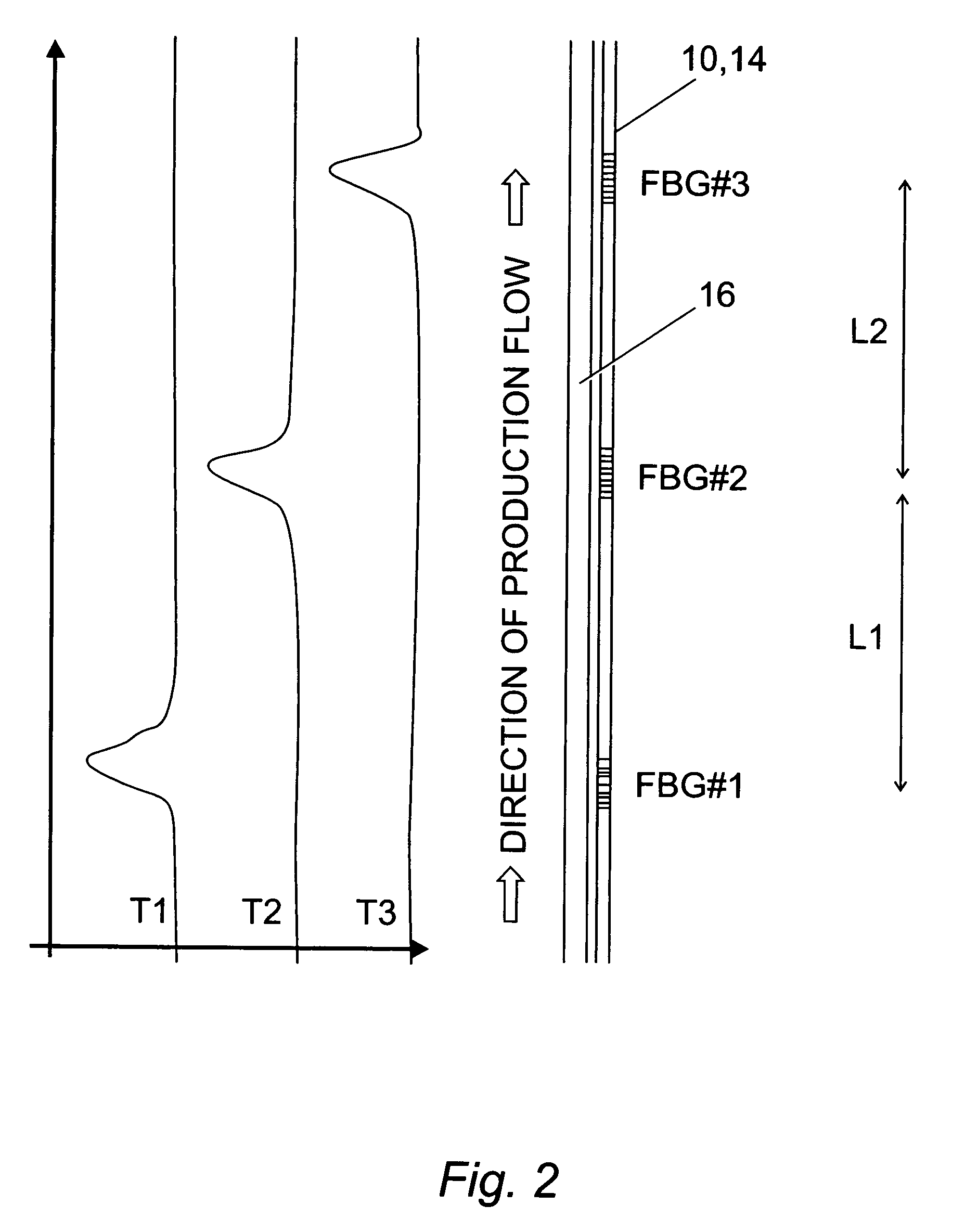Methods of monitoring downhole conditions
a technology of downhole conditions and monitoring methods, applied in the field of monitoring downhole conditions, can solve the problems of inability to provide a permanent monitoring system and the inability to provide noise log tools,
- Summary
- Abstract
- Description
- Claims
- Application Information
AI Technical Summary
Problems solved by technology
Method used
Image
Examples
embodiment 1
Determination and Identification of Flow Regime from an Acoustic Profile
[0048]One or more embodiments in accordance with the first aspect of the present invention will now be described.
[0049]When a fiber 10 containing FBGs 12 as described above is deployed downhole, an interferometer can be used to measure the acoustic signal between each successive FBG 12. If, for example, a sensor system comprising 20 FBGs 12 are present on a deployed fiber 10, separate acoustic measurements can be made of the 19 sections between these FBGs 12. For any given period of time, an “acoustic profile” can therefore be created for the section of the well across which the FBGs 12 are deployed.
[0050]This is of interest because aspects of the acoustic signal such as the frequency components and their amplitude, will be a function of parameters such as the fluid type and flow regime of the flow past the sensor system. For given types of fluids, flow regimes and flow patterns can be characterised in terms of ...
embodiment 2
Sand Detection
[0051]One or more embodiments in accordance with the second aspect of the present invention will now be described.
[0052]Sand flowing with the production fluid will generate noise as it impinges upon any restriction or otherwise comes in contact with any solid object, such as the wall of the production tubing 16. In relation to the production of clean fluids, sand-contaminated fluids generate discernible high-frequency components of the flow noise.
[0053]When an FBG 12 sensor system is deployed as described above, spectral analysis of the acquired acoustic signal can be used, particularly when referenced to an initial ‘baseline’ data set, to identify sand production or flow past the sensor.
[0054]FIG. 1 illustrates the signals received from such a deployed optical fiber 10 when the acoustic frequency is measured and analysed at two different points in the well where the dark trace shows the frequency signals received from a first FBG 12 and the lighter colour trace shows ...
embodiment 3
Identification and Location of Localized Events
[0055]One or more embodiments in accordance with the third aspect of the present invention will now be described.
[0056]An acoustic profile can also be used to identify the presence of flow behind casing 20 or in the annulus between the tubing 16 and the casing 20 because such flow will generate an acoustic signal. When a well is provided with an optical fiber 10 carrying FBGs 12 or is otherwise instrumented as described above is shut in (not flowing), or is flowing at a low rate, or when a measurement is compared to a baseline reference survey, acoustic events detected across a particular section, but not across the rest of the instrumented section, are indicative of localised events.
[0057]Acoustic activity when the well is shut in is an indication of possible flow behind the tubing, or from tubing 16 to annulus (or vice versa).
[0058]Similarly, a leak in the tubing 16 will generate noise. A leak may not be easily detectable on a thermal...
PUM
| Property | Measurement | Unit |
|---|---|---|
| frequencies | aaaaa | aaaaa |
| frequency | aaaaa | aaaaa |
| flow velocity | aaaaa | aaaaa |
Abstract
Description
Claims
Application Information
 Login to View More
Login to View More - R&D
- Intellectual Property
- Life Sciences
- Materials
- Tech Scout
- Unparalleled Data Quality
- Higher Quality Content
- 60% Fewer Hallucinations
Browse by: Latest US Patents, China's latest patents, Technical Efficacy Thesaurus, Application Domain, Technology Topic, Popular Technical Reports.
© 2025 PatSnap. All rights reserved.Legal|Privacy policy|Modern Slavery Act Transparency Statement|Sitemap|About US| Contact US: help@patsnap.com



